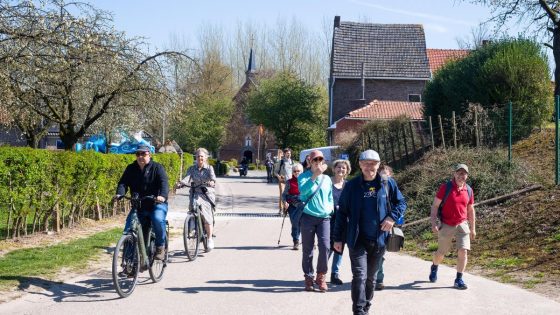A tragic incident has left a 62-year-old cyclist in critical condition following a collision with another cyclist in Ghent. On April 12, 2025, the local police reported that the woman’s injuries deteriorated rapidly after what initially appeared to be minor wounds. How can such accidents be prevented in our cycling-friendly cities?
- Vrouw had aanvankelijk lichte verwondingen
- Toestand verslechterde snel na incident
- Politiewoordvoerster bevestigt situatie van slachtoffer
- Tent opgezet voor medische verzorging
- Fietsster naar ziekenhuis in levensgevaar overgebracht
The situation escalated quickly, prompting emergency services to set up a tent for immediate care before rushing her to the hospital due to life-threatening injuries. This alarming event raises questions about cyclist safety on Belgian roads.
What Happened to the 62-Year-Old Cyclist After the Collision in Ghent?
The unfortunate event unfolded when a female cyclist was struck by another cyclist during what seemed like an ordinary day on the streets of Ghent. Initially reporting only minor injuries, her condition took a drastic turn within hours, necessitating her transfer to a hospital where she remains in critical condition. Such incidents remind US of how fragile life can be and raise essential questions regarding cycling safety measures across Belgium.
How Can We Improve Cyclist Safety on Belgian Roads?
This recent accident underscores the pressing need for enhanced safety measures for cyclists throughout Belgium. With cycling being a popular mode of transport in cities like Ghent, it is crucial that both authorities and citizens work together to create safer environments for all road users.
- Implement dedicated bike lanes separated from traffic
- Increase public awareness campaigns about sharing roads
- Enforce stricter penalties for reckless driving
- Encourage community programs promoting safe cycling practices
The Role of Local Authorities in Ensuring Cycling Safety
Local governments play an integral part in safeguarding cyclists by enhancing urban planning strategies that prioritize bike paths and pedestrian zones. For instance, investing in well-marked cycle routes not only protects riders but also encourages more people to choose biking as their primary mode of transport—reducing overall traffic congestion.
Cycling Culture: What Can Riders Do For Their Own Safety?
Cyclists must also take personal responsibility when navigating busy streets. Wearing helmets, using lights at night, and staying visible can significantly reduce accident risks. Remember: every small action contributes to greater safety on our roads.
Future Implications: Will Cycling Become Safer Post-Incident?
The aftermath of this tragic incident could serve as a catalyst for change regarding cycling policies across Belgium. As communities rally around improving infrastructure and encouraging responsible riding habits, we may witness significant advancements toward safer environments for cyclists everywhere.
This incident serves as a sobering reminder of the importance of road safety for cyclists. By fostering collaboration between authorities and individuals alike, we can work towards creating safer conditions that protect everyone who shares our roads—ensuring that no other family faces such heart-wrenching News again.


























